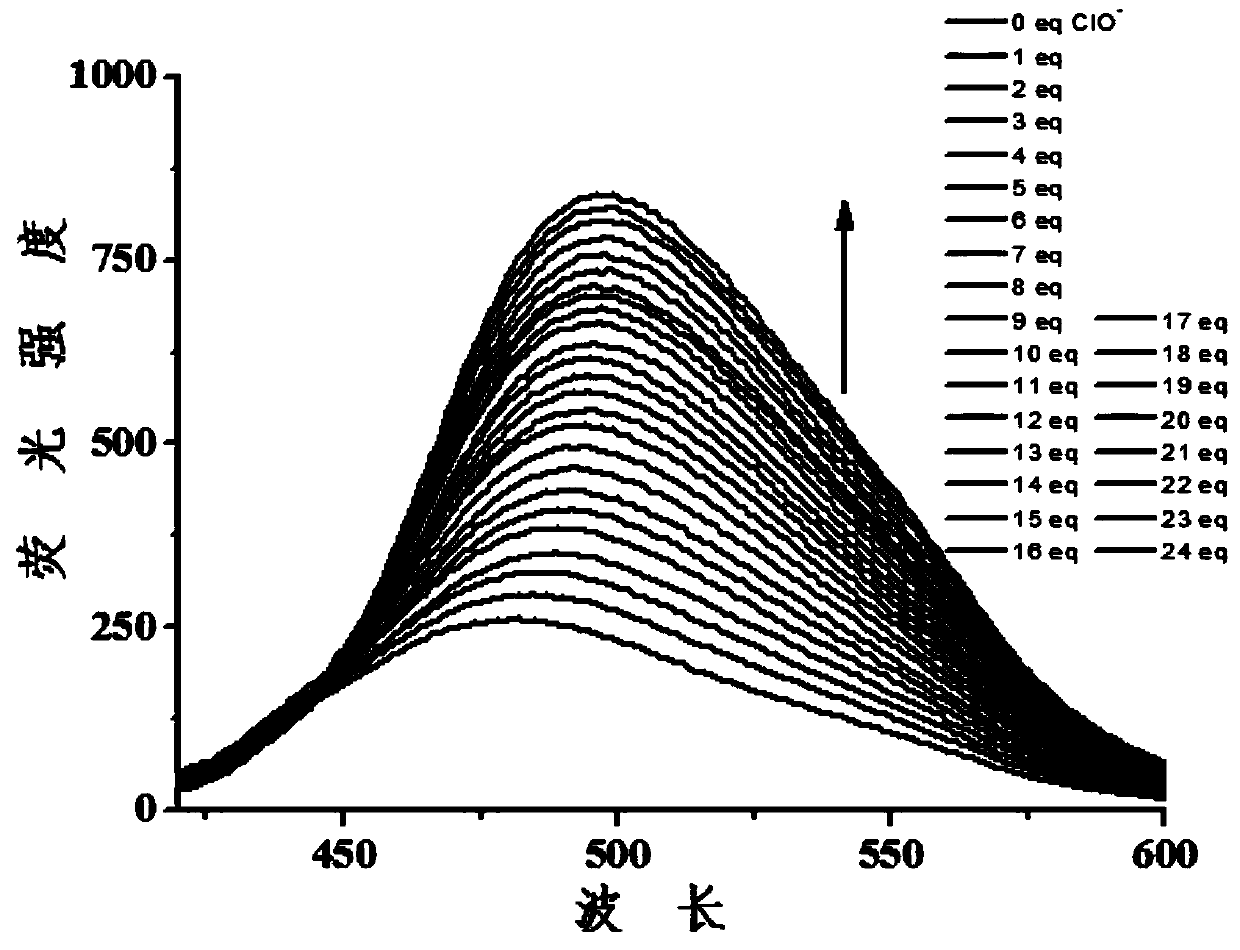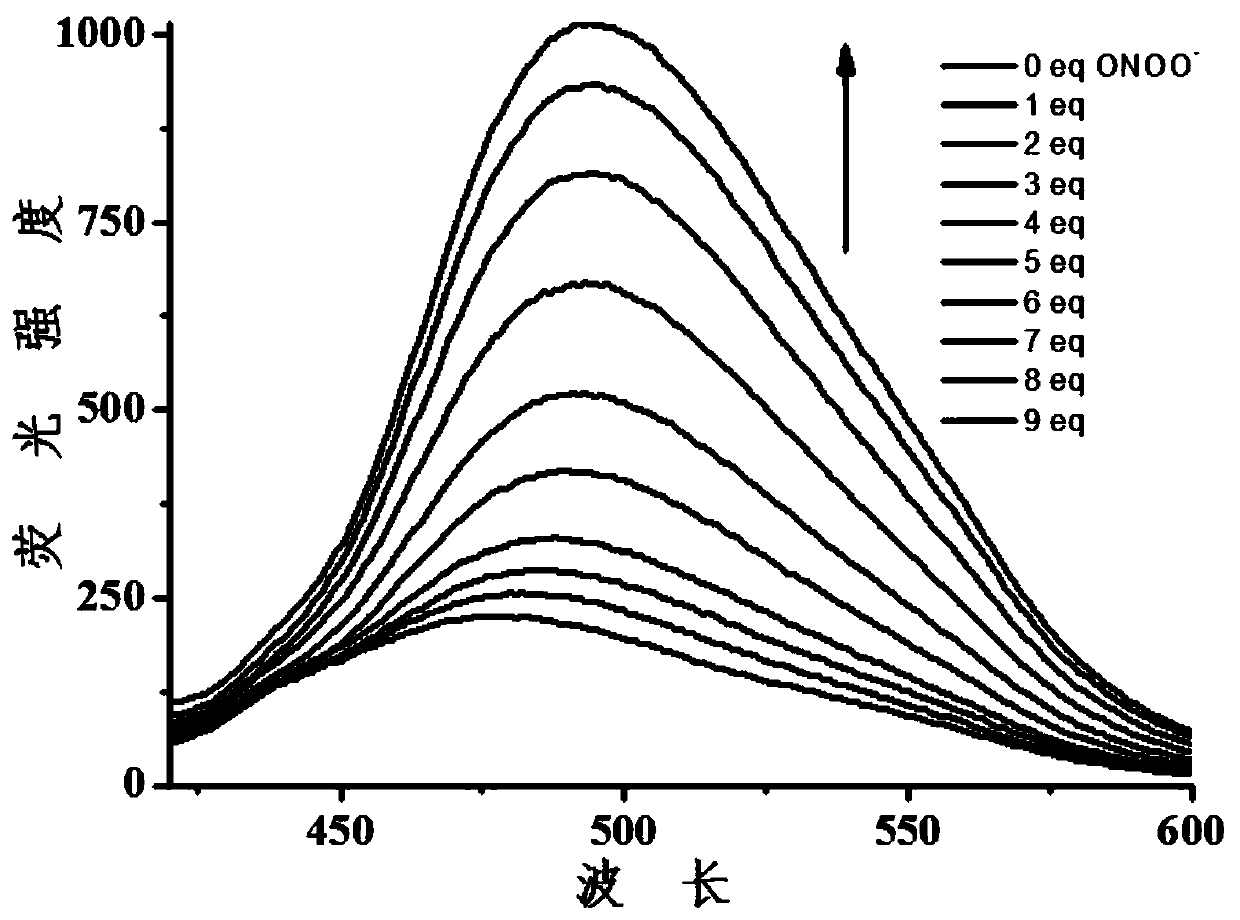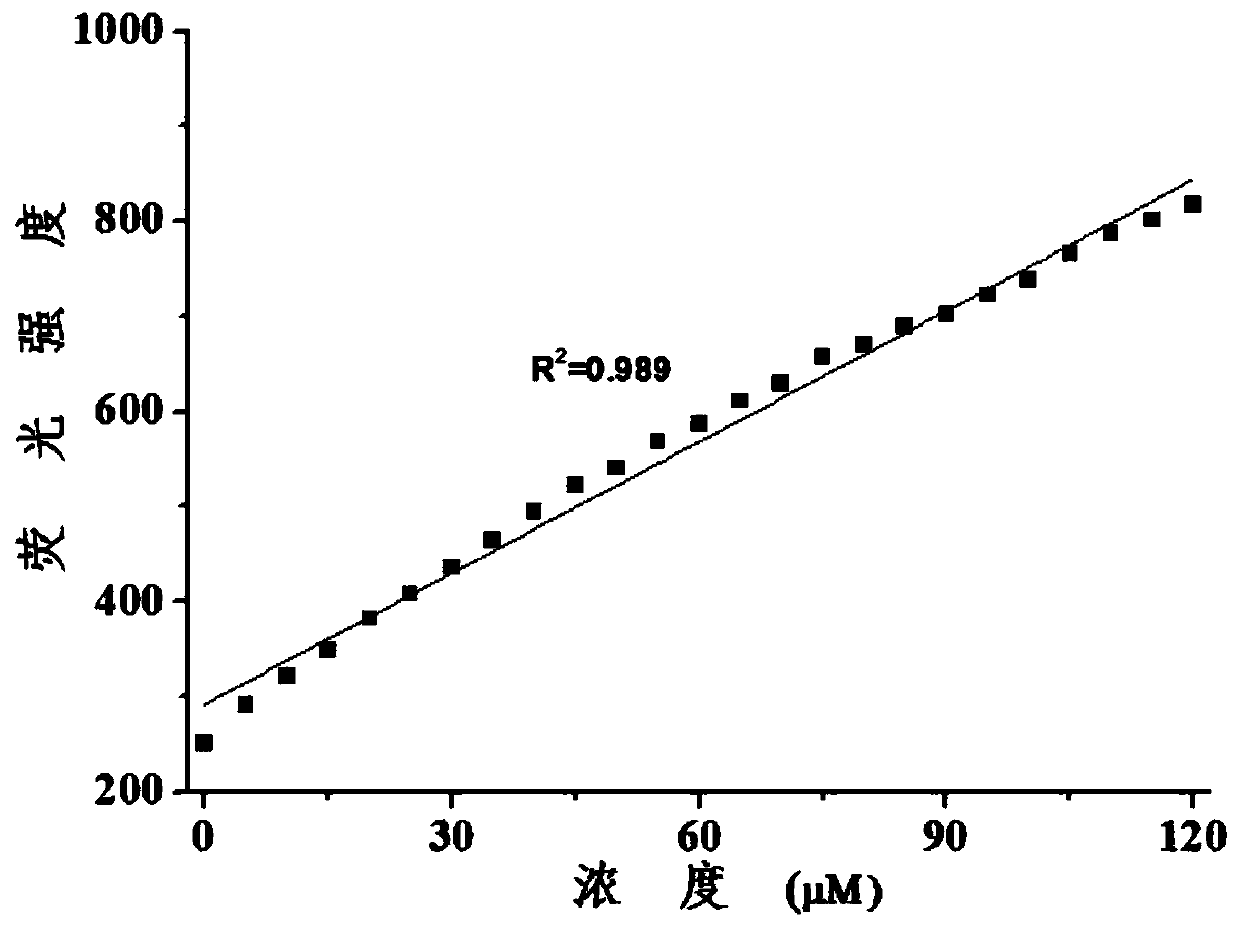Self-Assembly of Diphenol Compounds and 2-Formyl Phenylboronic Acid and Its Application as Fluorescent Probe
A aldehyde phenylboronic acid and self-assembly technology, applied in the field of biological analysis, can solve the problems of low detection limit, complexity, and long time consumption, and achieve good sensitivity and selective response, rapid detection, and simple structure.
- Summary
- Abstract
- Description
- Claims
- Application Information
AI Technical Summary
Problems solved by technology
Method used
Image
Examples
Embodiment 1
[0036] Example 1: The response analysis of the self-assembly of the diphenol compound (3) and 2-aldehyde phenylboronic acid to hypochlorous acid and peroxynitroso.
[0037] Take 3μL of diphenol compound (3) mother liquor and add 3mL phosphate buffer (10mM, pH=8.0), add 30μL 2-aldehyde phenylboronic acid to form a self-assembled system, and detect the change of fluorescence intensity; then add concentration 5, 10, 15, 20, 25, 30, 35, 40, 45, 50, 55, 60, 65, 70, 75, 80, 85, 90, 95, 100, 105, 110, 115, 120μM hypochlorous acid, detect fluorescence intensity Change, with the increase of hypochlorous acid concentration, the fluorescence intensity increases obviously, see figure 1 . The self-assembly of diphenol compound (3) and 2-aldehyde phenylboronic acid can be used as a fluorescent probe for the detection of hypochlorous acid.
[0038] Take 3μL of diphenol compound (3) mother liquor and add 3mL phosphate buffer (10mM, pH=8.0), add 30μL 2-aldehyde phenylboronic acid to form a self-as...
Embodiment 2
[0039] Example 2: The quantitative detection of hypochlorous acid by self-assembly of the diphenol compound (3) and 2-aldehyde phenylboronic acid.
[0040] Take 3μL of diphenol compound (3) mother liquor into 3mL phosphate buffer (10mM, pH=8.0), add 30μL of 2-aldehyde phenylboronic acid to form a self-assembled system, and then add different concentrations of hypochlorous acid (0,5 , 10, 15, 20, 25, 30, 35, 40, 45, 50, 55, 60, 65, 70, 75, 80, 85, 90, 95, 100, 105, 110, 115, 120μM), the detection is in Fluorescence intensity at emission wavelength 493nm under different hypochlorous acid concentration, get linear relationship graph, see image 3 . The concentration of hypochlorous acid is on the horizontal axis (in μM), and the fluorescence intensity at 493 nm is on the vertical axis. Among them, the fluorescence intensity (y) and hypochlorous acid concentration (x) satisfy the linear equation of one element: y=292.062+23.003×x, the correlation index R 2 = 0.989. The self-assembl...
Embodiment 3
[0041] Example 3: The self-assembly of diphenol compound (3) and 2-aldehyde phenylboronic acid to quantitatively detect peroxynitroso groups.
[0042] Take 3μL of diphenol compound (3) mother liquor and add 3mL phosphate buffer (10mM, pH=8.0), add 30μL of 2-aldehyde phenylboronic acid to form a self-assembled system, and then add different concentrations of peroxynitroso (0 ,5,10,15,20,25,30,35,40,45μM), detect the fluorescence intensity at the emission wavelength of 493nm under different peroxynitroso groups concentration, and get the linear relationship diagram, see Figure 4 . The concentration of peroxynitroso groups is on the horizontal axis (in μM), and the fluorescence intensity at 493 nm is on the vertical axis. Fluorescence intensity (y) and hypochlorous acid concentration (x) in the concentration range of 0-15μΜ satisfy a linear equation of one element: y=213.4+7.457×x, correlation index R 2 = 0.996. Fluorescence intensity (y) and hypochlorous acid concentration (x) in...
PUM
 Login to View More
Login to View More Abstract
Description
Claims
Application Information
 Login to View More
Login to View More - R&D
- Intellectual Property
- Life Sciences
- Materials
- Tech Scout
- Unparalleled Data Quality
- Higher Quality Content
- 60% Fewer Hallucinations
Browse by: Latest US Patents, China's latest patents, Technical Efficacy Thesaurus, Application Domain, Technology Topic, Popular Technical Reports.
© 2025 PatSnap. All rights reserved.Legal|Privacy policy|Modern Slavery Act Transparency Statement|Sitemap|About US| Contact US: help@patsnap.com



